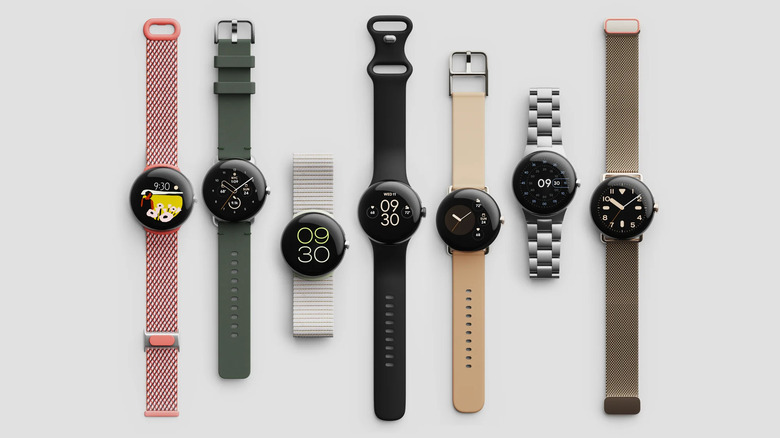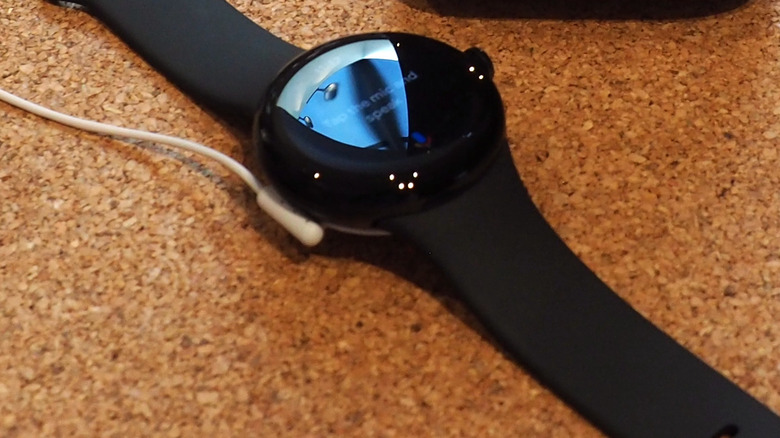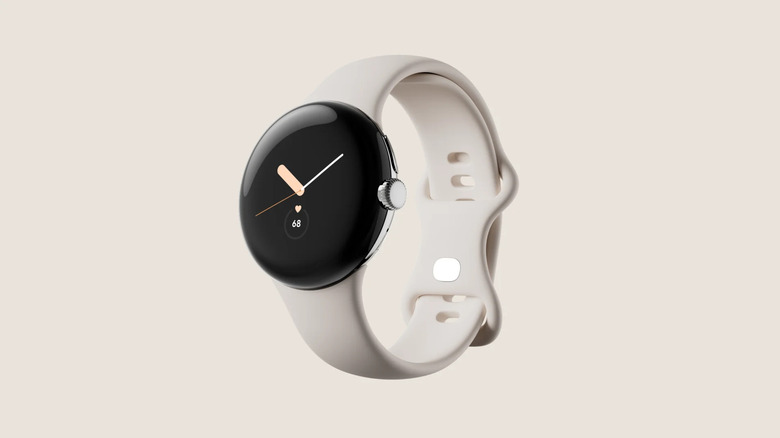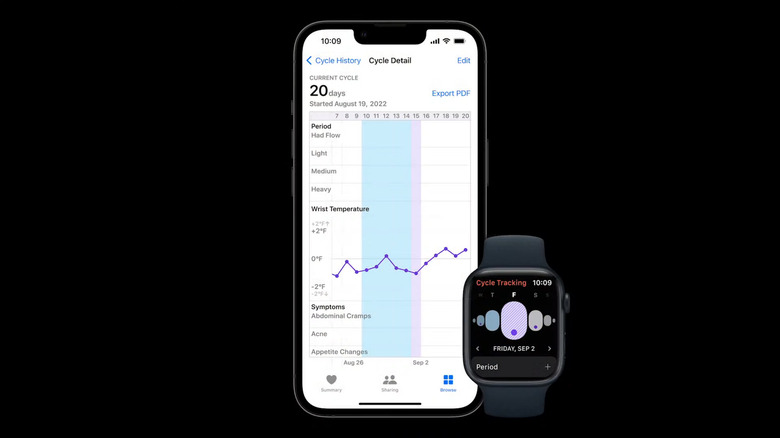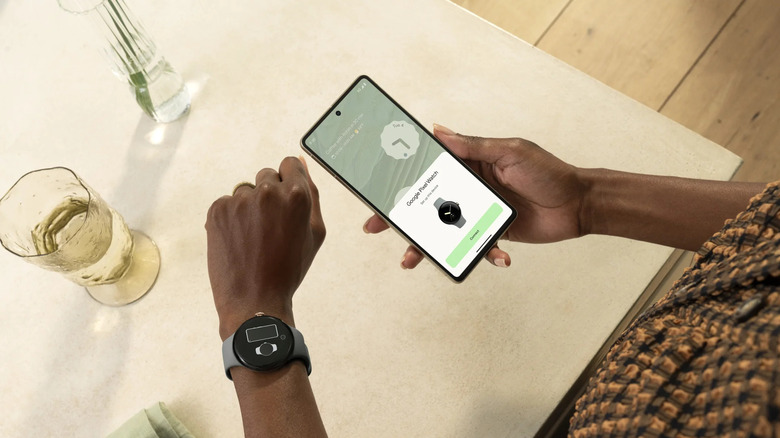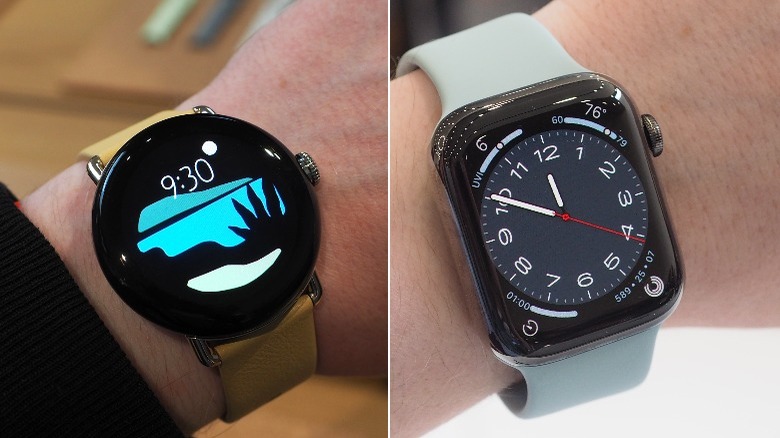Google Pixel Watch Vs Apple Watch 8: The Big Differences Explained
Google has announced its first premium smartwatch, and, in doing so, entered a market with plenty of competition. Large companies like Samsung and Garmin are well-established in the smartwatch sphere, but when it comes to wrist-worn tech one name stands out. While you can pick at stats all day, and there are plenty of devices that do various things better, the Apple Watch is a solid all-rounder. In terms of brand recognition, it probably sits at the top of the pile.
Apple announced the Apple Watch Series 8 a few weeks ago, and there is a lot of overlap between both devices. Smartwatches, on the whole, have been around long enough for certain features to be standard. So expect things like sleep tracking, step counting, and heart-rate monitoring on both of these watches (and essentially every other similar device on the market). Third party apps like Spotify also show up on both devices, and with things like Apple Pay and Google wallet you have slight differences but essentially the same service. So what actually sets the watches apart from one another, and which one should you buy?
Battery life is a toss up
Battery life is an important consideration when you're buying a device. You can have the most advanced smartphone on the market, but it is borderline useless if your customers could only use it for half an hour before it ran out of juice. Battery life is especially important with smartwatches. A key selling point on a lot of smart wristwear is fitness tracking, and that is usually a 24 hour thing. During the day, your watch might track your steps, periods of exercise, and heart rate. At night, while your phone is probably charging on the nightstand, your smartwatch is likely still strapped to your wrist and tracking your sleep. This leads to two problems. The watch needs a long battery life so it can get through both day and night, second, it needs to charge quickly so it can make the most of the small windows where you can plug it in and still achieve near 24/7 tracking.
On paper, both watches do a good job, but Apple's watch may do things better if features are turned off. In terms of how long a charge lasts, the Pixel Watch can go "up to" 24 hours, while the Apple Watch Series 8 can last 36 in "low power mode." Both companies' claims are based on a best-case scenario. Apple's watch is operating with most of its features disabled, hence the low power mode, and "up to" is incredibly vague, and just means it isn't expected to go beyond that point. We doubt either case accounts for heavy use or use with power-sapping features like GPS. The company estimates around 18 hours of charge with "regular use," but it wouldn't be a shock if both watches had a very similar amount of battery life.
The Pixel is pretty well rounded
If you place the watches side by side, you can spot some fairly major differences at a glance. The Apple Watch, like its predecessors, has a distinctive square shape, albeit with rounded edges. Google has gone in a different direction with the Pixel Watch. Fitting in with the rest of the Pixel range, the smartwatch is quite rounded with a circular display. During its unveiling, Google even boasted about the watch's unique shape, and how it has allowed them to essentially eliminate the bezel you'll find around other watches. You could also argue that the Pixel's display is a touch more fun, given that you can add your Bitmoji doing an action to the screen, which is a bit less terrifying than just having a floating Memoji head there glaring at you.
The cosmetic differences don't end there. Both the Apple Watch Series 8 and the Pixel Watch come in a variety of finishes, and with a number of default strap options. Then there are alternative bands that can be purchased and swapped in for the default straps. Both companies offer a wide range, and those ranges are massively varied. Either way, it's easy to customize that aspect of your smartwatch to suit your look. A key difference comes in how these bands connect to the watches themselves. Apple watches use a latch system, while the Pixel watch favors a "twist and click" approach, which appears to better integrate the strap and watch body.
Apple focus on women's health
Fitness is a major focus of both the Apple Watch Series 8 and Google's new Pixel Watch, but both companies have gone about things differently. The Pixel Watch might be Google's first direct foray into the smartwatch market, but it's far from the first smartwatch a Google-owned company has released. The tech giants paid $2.1 billion for fitness tracker manufacturer Fitbit a few years ago, and it's perhaps unsurprising that the smaller, specialist company has had a huge role to play in the Pixel Watch's development.
Pretty much all of the fitness and health functions of Google's new smartwatch are credited to Fitbit. If you're looking at the watch from a gymgoer's perspective, it might be easier to consider it a Fitbit Versa on steroids. Google promises features like heart rate tracking will be more accurate than they've ever been on one of Fitbit's standalone models. As it's Google's "first attempt" at a smartwatch, the fitness features are basically what you'd expect. Exercise and sleep tracking, heart rate monitoring, the usual. There's also a premium subscription service that offers extra workout routines, meditation, hints and tips.
Apple's wristwear has been around for a while, and so the company seems to be more comfortable with specialization. This may be why the company had previously included menstrual cycle tracking in its list of watch features. The Apple Watch 8 built upon this with its temperature tracking feature, which the company says allows it to provide a more accurate picture of where a woman is in her cycle. If you want an all round fitness tracker, both watches are premium and neither is likely to do a bad job. However, if you have a particular interest in women's health, the Apple Watch might just have the edge.
Your other devices might be the deciding factor
While stylistic choices, fitness specifics, and battery life are important, one factor dwarfs others when it comes to what watch you actually want to choose. What devices do you already own? The level of integration between Apple's products is frankly amazing. Everything works together seamlessly, and the whole process of connecting devices is so simple, anyone could do it. On the flip side, getting Apple and non-Apple devices to play nicely can be a bit of a chore. That might include purchasing numerous expensive adapters if you want to use something with a standard connector.
Similarly, integration with Google's other devices is central to the new Pixel watch. It can pair with products from other companies via Bluetooth, but one of the main selling points of its new devices is Google's "fast pair" system which allows you to connect two eligible devices quickly and easily. While Bluetooth pairing is an option, and another way to control your smart home is nice, there is something important to keep in mind. If you're pairing a Pixel Watch with an iOS phone, you're going to lose a good amount of functionality. The same is true when pairing an Apple Watch with an Android. More than anything else, the phone you keep in your pocket should be the main factor in deciding what particular smartwatch you want.
And your accounts play a part
Apps also play a role. Just as your Apple ID is central to many of your iPhone and Apple Watch's functions, you'll be missing out on a lot of the Pixel Watch's features if your digital life doesn't revolve around your Google account. Emails, calendar appointments, and your Google wallet are all prominent on the new smartwatch, and those key features are useless if you don't really bother with Google. Even your Google smart home is central to one of the Pixel Watch's coolest features, though it is possible to have a Google-centric smart home and an iPhone. The smart home integration may just be enough to pry you away from Apple when it comes to your watch choice.
At the end of the day, if you want to be smart while picking a watch, look at what you're already using and go for the best watch that works well in your current ecosystem.
